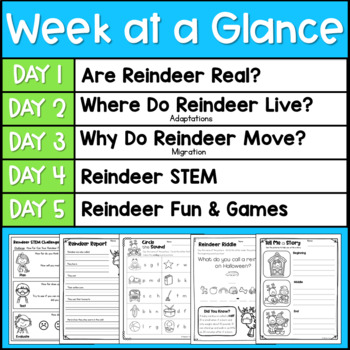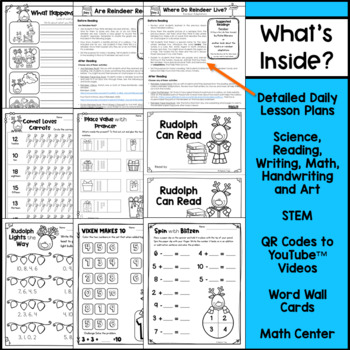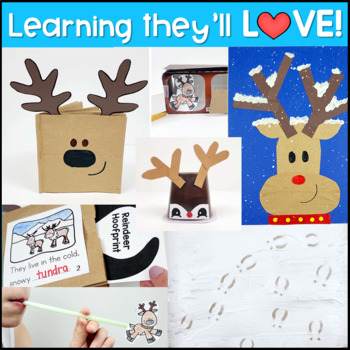Reindeer Unit for Kindergarten and First Grade
- PDF
What educators are saying
Description
Are reindeer really real? If so, where do they live? What does migrate mean? Learn the answers to these questions and MORE during this reindeer unit for kindergarten and first grade! The week-long comprehensive unit includes detailed daily lesson plans with literature suggestions. It incorporates science, reading, writing, math, STEM, handwriting and art. It also includes QR codes and links to videos that complement the unit study.
Click on the PREVIEW to read each lesson plan, see the Week-at-a-Glance planning sheet, as well as examples of printables and art projects.
Teacher Features You’ll Love
- Detailed daily lesson plans
- Week-at-a-glance planning guide
- Guide for stretching the unit over two weeks
- Key concepts and objectives
- Extensive literature list
- Video links and QR codes
- Differentiated versions of math sheets
- Activity directions and printable templates
What’s Covered in the Unit?
Day 1: Are Reindeer Real?
- Are Reindeer Real? class graph
- Reindeer paper bag book
Day 2: Where Do Reindeer Live? (Adaptations)
- Label the Reindeer sheet
- Reindeer paper bag book
Day 3: Why Do Reindeer Move? (Migration)
- Hoofprints in the Snow art project
- Finish reindeer paper bag book
Day 4: Reindeer STEM
- Flying Reindeer
- Build a Barn/Stall for a Reindeer
Day 5: Reindeer Fun and Games
- If I Had a Pet Reindeer writing
- Add the Antlers play doh mat
- Feed the Reindeer relay
- Reindeer art project
- Baby reindeer pudding cups
Math Connections
- Math task cards for a "Write the Room" activity or math center
- Counting within 10, 20 and 100
- Counting by tens
- Tally marks
- Finding one more/less, ten more/ten less
- Ordering numbers least to greatest
- Place value: counting base ten pieces to 20 and 100
- Addition and subtraction within 10, 20 and 100 (no regrouping)
- Number bonds
- Making ten
- Time to the hour and half hour
- Graphing
- Measuring with nonstandard units
- Word problems
Literacy Connections
- Reindeer word wall
- “Rudolph Can Read” emergent reader
- Beginning and ending letter sounds
- Rhyming
- CVC words
- Hard and soft sound of C
- PH digraph
- Beginning, middle, end of a story
- Making predictions
- Problem/Solution
- Writing sentences
- Reindeer Report writing prompt
- Flying School writing prompt
- If I Had a Pet Reindeer writing prompt
- Reindeer Rescue writing prompt
- Reindeer Book Report writing prompt
- All About Reindeer/Caribou writing prompt
Questions? Feel free to email me at primarythemepark@gmail.com or contact me through the "Product Q & A" tab here.
You might also like:
Christmas Writing Prompts for K-2
Thanks so much for stopping by!





